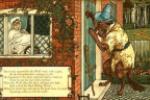Calibrating the Moral Compass
August 6, 2018
The value of life involves two distinct aspects: the physical—life itself or the actual human “being” of aliveness—and the metaphysical in orbit around it that is everything we consider worthwhile in life—our loves, ambitions, and desires, including our sense of oughtness referenced within morals, ethics, justice, and rights.
Good People Who Want to be Better People Get Trained
June 4, 2018
"I'm at Laughing Man Tavern in Washington, DC." This is the last tweet of Kevin Joseph Sutherland. It's dated July 3, 2015. In the early afternoon of July Fourth, Sutherland boards the Metro Red Line to meet friends downtown to watch fireworks. He is twenty-four, has recently graduated from American University, and has been hired as a digital strategist for a DC firm.
The Protector Ethic
May 21, 2018
Take this true story of a young man who went to the aid of a young woman—she was being beaten. This fellow tried to thwart the attack by attacking her attacker. But, unbeknownst to our hero, the aggressor's friends were not far behind, and when they came on their comrade receiving a knuckle sandwich, they served up several of their own. Whatever happened to the girl is anyone's guess.
No, Fairy Tales Are Not Morally ‘Ambiguous,’ And That’s Why They’re Worthwhile
May 14, 2018
“Darth Vader was seduced by the other side of the Force.” Actually, it was the dark side, not the other side. Vader was seduced by a set of values in contradiction to what Jedi took for granted about the Force and its usage.
Interpreting The Kanji
June 2, 2015
Studying an Asian martial art can be a daunting task for a non-Asian student. Not only do you have to learn the physical postures and how to move from one to the other, you also strive to master the seemingly endless number of techniques. As well, the cultural milieu in which the martial art developed is often confusing. Many times the task you undertake is compared to climbing a mountain, and for good reason.
About Junbi Undo—Part 2
-
August 22, 2010
"Lift things properly, hit things with care", this maxim should be at the forefront of your mind when embarking upon the study of traditional Okinawan hojo undo. Find your limit with each tool and exercise, and then carefully and methodically push that limit further and further. In doing so you will learn much about yourself and who you really are.
About Junbi Undo—Part 1
-
August 16, 2010
In an Okinawan karate dojo, warming-up exercises are known as junbi undo, preparation exercises. Within many Western schools of karate today, the warm-up exercises often have little in common with the mental activity that follows, neither do they always relate particularly well to the physical demands placed upon the specific muscle groups and tendons throughout the body that are about to be used in the karate training itself.
¿Golpeas al objetivo?
-
December 14, 2009
Nunca dudé, al ponerme frente a Kanazawa sensei, que iba a "enchufarme". Pero tenía la absoluta certeza de que no iba a hacerme daño.
Are you hitting the target in Karate?
-
November 30, 2009
There was never a doubt in my head when I lined up to face Kanazawa sensei, I knew he was going to 'plug' me.
Remembering Chojun Miyagi
-
November 11, 2009
Among the huge number of so-called karate styles in the world these days, all can be traced back to the island of Okinawa, the largest island in the Ryukyu archipelago that stretches from the southern coast of Japan to the northern tip of Taiwan.
Hojo Undo: Traditional Karate’s Forgotten Training Methods
-
September 9, 2009
In an age where karate training is often viewed as a family pastime for some or a career path for others, many of the older and more traditional forms of training have slipped from use, replaced in many cases by a quest for physical entertainment.
Big Rocks: The Hidden Values of Traditional Karate
-
August 13, 2009
A philosopher and teacher of the ‘Way’ began addressing his students. He produced, from behind a screen, a large glass container and a box of fist-sized rocks. After a few moments of carefully placing the rocks into the glass container, he came to a point where no more would fit. He then turned to his students and asked: “Is it full?”










